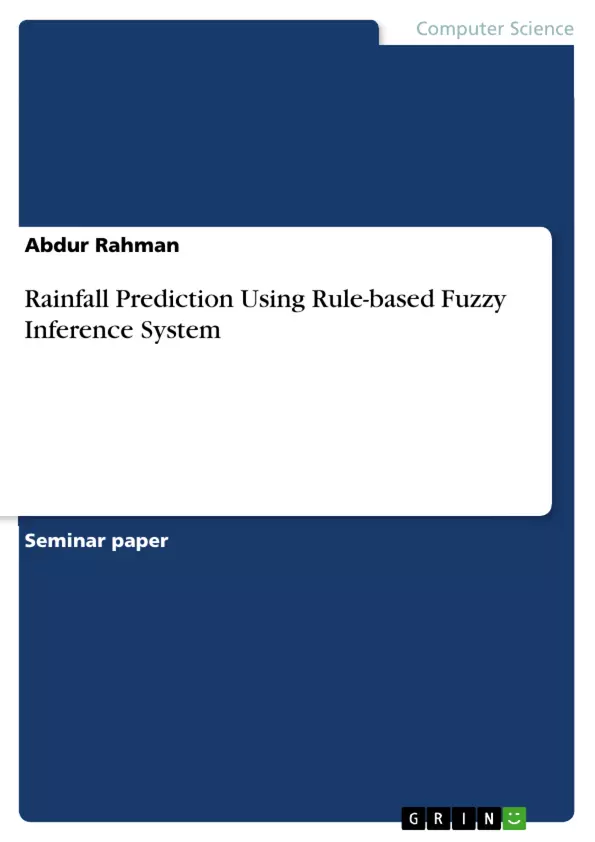My main goal in this paper is to lessen the likelihood of flooding and a drought. My main area of interest is the use of temperature, atmospheric and variance to forecast rainfall. Applying rule-based reasoning and fuzzy logic, I attempted to predict when it will rain. Mamdani implication is used to prepare the fuzzy rule foundation. Fuzzy tool box and MATLAB Simulink are the programs used for this. The predicted results are derived using the triangle membership function. The input variables for our model are humidity, atmospheric pressure, temperature, and clouds. All but clouds have three membership functions. There are three membership functions for the output variable. The software used for all implementations is MATLAB 7.9.
Inhaltsverzeichnis (Table of Contents)
- Problem Definition
- 1 Details about the problem:
- 2 Details about the set applied:
- Result and Discussion:
Zielsetzung und Themenschwerpunkte (Objectives and Key Themes)
The main objective of this paper is to develop a fuzzy logic-based system for rainfall prediction, aiming to improve forecasting accuracy and contribute to mitigating the risks associated with flooding and drought.
- Fuzzy Logic and its Application in Weather Forecasting
- Rainfall Prediction using a Rule-based Fuzzy Inference System
- Implementation of Mamdani Implication in the Fuzzy Rule Base
- Analysis of Input Variables: Humidity, Atmospheric Pressure, Temperature, and Clouds
- Evaluation of the Model's Performance and Discussion of Results
Zusammenfassung der Kapitel (Chapter Summaries)
- Problem Definition: This section introduces the importance of accurate rainfall forecasting to manage water resources and mitigate the risks of flooding and drought. It highlights the challenges of weather forecasting due to inherent uncertainties and presents fuzzy logic as a promising approach for handling these complexities.
- 1 Details about the problem: This section outlines the specific problem addressed in the paper, focusing on the use of four input variables: humidity, atmospheric pressure, temperature, and cloud type. The simplified model uses these variables to predict the likelihood of rain, with the process depicted in a basic block diagram of the fuzzy inference model.
- 2 Details about the set applied: This section details the membership functions for the input and output variables, outlining how measurement values are converted to fuzzy values for processing within the fuzzy logic system. The rules for the fuzzy controller are presented, illustrating how they are constructed based on common sense and general knowledge.
- Result and Discussion: This section focuses on the implementation of the fuzzy logic model, outlining the process of collecting input data, fuzzification, and the application of fuzzy rules to generate an output prediction for rainfall. The response surface of the input-output relationship is discussed, highlighting the role of the Fuzzy Interface Unit (FIU) in the process.
Schlüsselwörter (Keywords)
This paper explores the application of fuzzy logic, a type of artificial intelligence, to improve rainfall prediction. The study utilizes a fuzzy interface system (FIS), specifically the Mamdani implication method, to develop a rule-based system that analyzes input variables such as humidity, atmospheric pressure, temperature, and cloud type. The focus is on applying fuzzy logic to address the uncertainties inherent in weather forecasting and generate more reliable predictions for rainfall events.
- Quote paper
- Abdur Rahman (Author), 2023, Rainfall Prediction Using Rule-based Fuzzy Inference System, Munich, GRIN Verlag, https://www.hausarbeiten.de/document/1321941


